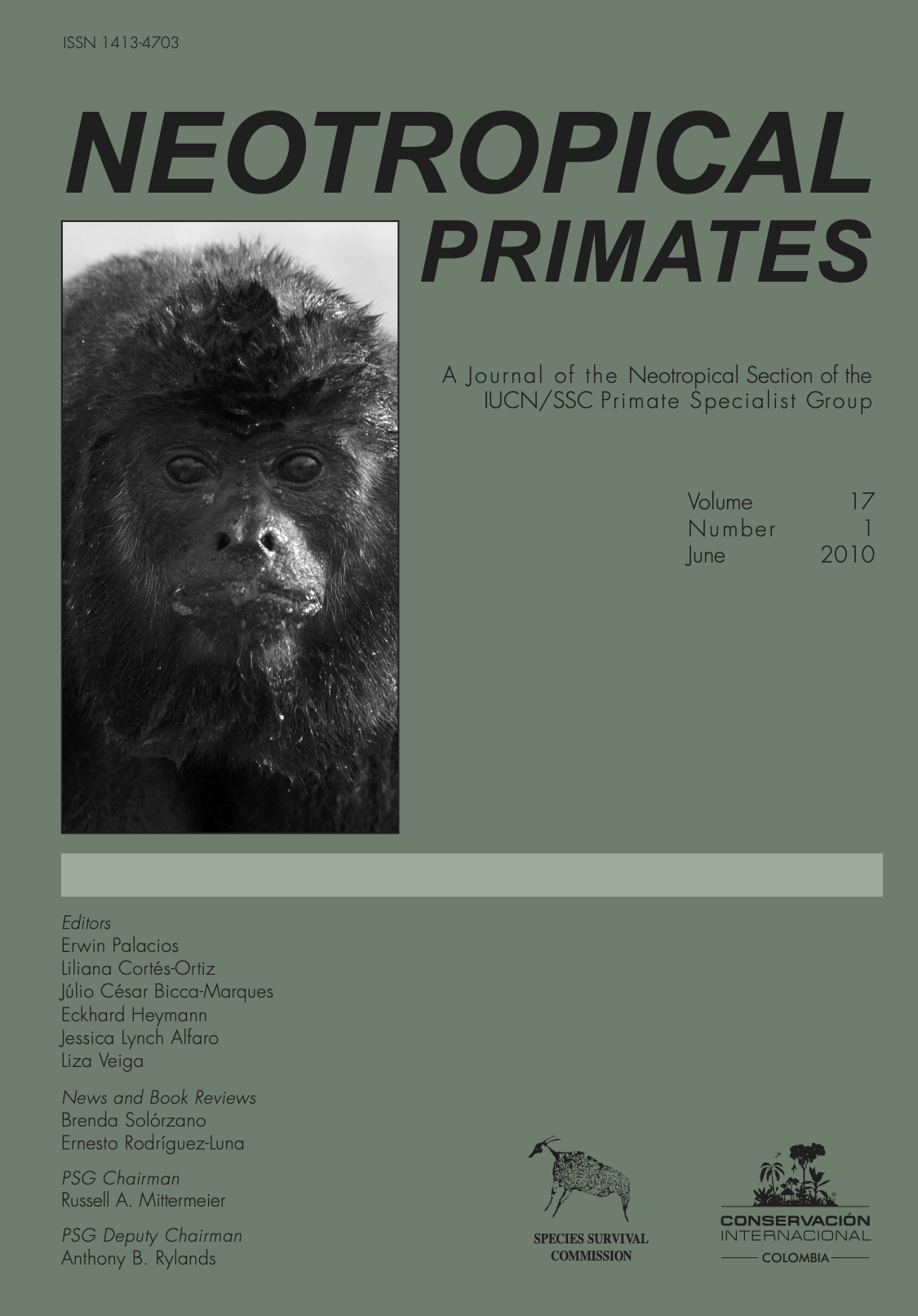Demography and conservation status for the critically endangered mexican howler monkey (Alouatta palliata mexicana) in the southern part of Los Tuxtlas Biosphere Reserve, Veracruz, Mexico
DOI:
https://doi.org/10.1896/044.017.0104Keywords:
Alouatta palliata mexicana, Tropical rain forest, Demography, Veracruz, MexicoAbstract
The conservation status of the Mexican howler monkey in core zone III of Los Tuxtlas Biosphere Reserve, Veracruz, Mexico, is uncertain. Here, we provide the first set of demographic data of Alouatta palliata mexicana in the southern sector of the core zone III by using two different methods: line transect and sweep census. A total of twenty-six individuals divided in 6 groups were registered inhabiting the continuous forest, with a mean group size of 4 (± 0.5) individuals and a range of 3 to 6 individuals. The density of the animals for the study site was 0.04 howler monkeys/ha. Conversely, no individuals were found in any of the fragments surveyed within the buffer zone. Overall, field research showed a much lower density than was expected, suggesting historical and/or contemporary factors may be directly and/or indirectly affecting the persistence of the howlers in the area. New studies focused on the environmental changes caused by natural or anthropogenic factors will be of great aid in future management interventions and viability assessments of the population.

Downloads
Published
Issue
Section
License

This work is licensed under a Creative Commons Attribution-NonCommercial-ShareAlike 4.0 International License.


